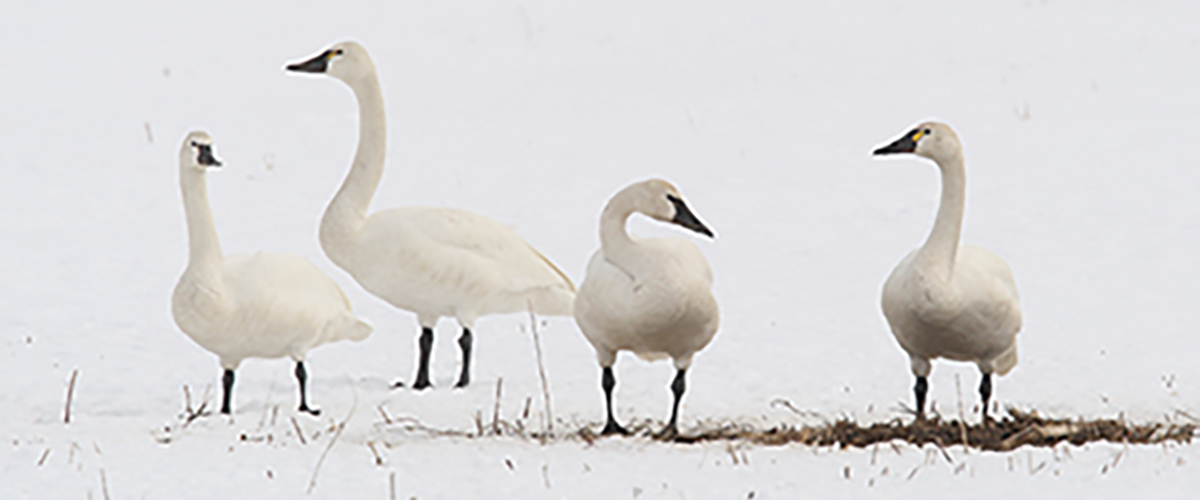The Tundra Swan
The Tundra Swan, formerly known as the whistling swan, is a large bird with white feathers, black bill, short black legs and large black webbed feet. There is a small, oblong yellow patch at the base of the bill and just in front of the eye. The species name of the Tundra Swan is Cygnus columbianus.
A full grown Tundra Swan boasts a wing span of between 180 cm and 210 cm. They measure between 120 cm and 148 cm in length and weigh approximately 5 kg to 8.2 kg. They mate for life. They can fly at a top speed of 88 km/h (55 mph). The Tundra Swan holds its neck and head erect while swimming and walking, with the crown and forehead displaying a rounded profile.
Young Tundra Swans are called cygnets. Born in late spring, by fall, they have dusky grayish feathers, with dusky pink, dark tipped bills. At one year they acquire their white plumage and dark bill. They do not breed until they are 4 to 5 years old.
In migration, the Tundra Swan can be distinguished by its mellow high pitched hoo-ho-hoo call, which is somewhat similar to that of the Canada Goose.




 Subscribe to this page
Subscribe to this page